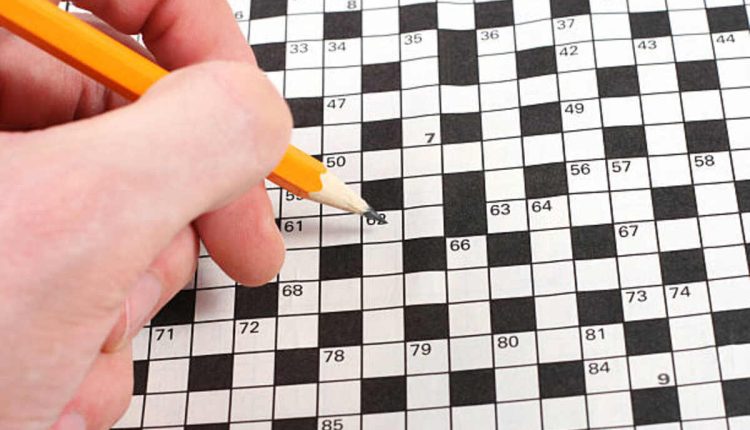If you’re looking for a fun way to exercise your brain, try solving New York Times crossword puzzles. Though these may be challenging, these crosswords are an excellent way to develop mental agility and concentration while having some fun! Here are some tips for solving them: 1. Know the clues.
The New York Times offers daily crossword puzzles of varying difficulties, featuring anagrams, double meanings, and wordplay puzzles.
Answers for today’s puzzle
The New York Times crossword puzzle is one of the world’s best-known challenges. Though difficult, its rewards can be immense once solved! Published daily in the newspaper and accessible via desktop and mobile device access.
The New York Times publishes a grid with various difficulty levels each day. Each week progresses into more challenging puzzles – starting Mondays with 15×15 grids followed by 16×16 grids on Tuesdays and Thursdays, 20×20 grids on Saturdays, and culminating with larger 21×21 grids on Sunday. Each puzzle also contains intriguing clues and themes.
The New York Times crossword provides a variety of clues, such as anagrams and double meanings, that will help you solve its puzzle more quickly. Anagrams involve rearranging letters to form new words or phrases that answer an ambiguous clue; double meanings refer to terms with multiple definitions, such as bark (a tree cover or sound a dog makes). Both types of clues will assist you in your efforts.
Anagrams
Anagrams are an engaging way to exercise your brain, expand your vocabulary, and have fun! You could even use them to make a statement. For instance, if you wanted to comment on a novel or movie, you could compose an anagram referencing its plot or characters. Anagrams can often add a sense of humor or irony to popular culture. For instance, “redrum” is an anagram pun on “murder.” Furthermore, many artists and musicians have used anagrams within their works. Imogen Heap’s album title, megaphone, is an anagram of her name, and Interpol’s Presto album features a song with similar anagrammatic lyrics about traveling to Morocco and several cities there.
Anagrams may seem simple, but creating good ones takes more skill and craft. A good anagram must be perfectly rearranged without leaving any gaps; this task may seem impossible without modern technology – for instance, programs can analyze words to look for possible anagrams; this allows you to spot ones that would otherwise go undetected.
An anagram’s wow factor can also help determine its quality; the more appealing an anagram is when it contains its wow factor, especially when humorous or provocative anagrams are included. Humor makes an anagram more engaging; it is particularly effective if used sarcastically or rudely.
Anagrams can be created by rearranging the letters in a word or phrase; for example, “evil” could become “vile.” Also, Clint Eastwood and Nail Biting Refresh Feet are anagrams of “The Best Things In Life Are Free.” However, more complex anagrams involve transposing one word into another obscure one – for instance, Honorificabilitudinitatibus from Shakespeare’s Play Love’s Labor’s Lost is an anagram for Baconis Natuiti Orbi!
Double meanings
Double meanings are words or phrases with two distinct senses; the more obvious and relevant to their context is known as the literal sense, while its opposite – often humorous or with subtle undertones – is known as the figurative sense. Double meanings are frequently employed for humor or making points through clever or ironic implications – for instance, ordering a double dip on an ice cream cone means getting two scoops to lick or breaking your arm twice, while roller skating is a dual arm fracture.
These examples come from the Merriam-Webster Online Dictionary and may include jokes or puns. Please do not interpret them as reflecting the views or endorsement of Merriam-Webster or its editors – instead, please send us feedback about what we should add next year! 2019 Merriam-Webster.
Wordplay
Wordplay is a form of nonliteral discourse that employs words in nonlinear ways to make points or create images that do not correspond with their literal meanings. Examples include metaphors, similes, irony, and oxymorons, and creating puns through wordplay. Wordplay can also be used to make an interesting or provocative statement or convey different interpretations than what would otherwise be understood from its literal definitions of words or phrases.
Wordplay can be found anywhere from crossword puzzles, poetry, novels, and other literary forms – for instance; Oscar Wilde was famed for his amusing use of witty wordplay; many of his plays and poems featured subtle puns and figurative language that would leave audiences amused and entertained.
NYT crossword puzzles can be an excellent way to increase brainpower and challenge yourself, providing all the clues for the One Eating A Lot Of Wings NYT puzzle on this page. Once completed, move on to other fun puzzle games for further challenge and brainpower development – this website is also an invaluable source of crossword answers and additional info for NYT puzzles; find solutions even for puzzles not in today’s daily grid!


